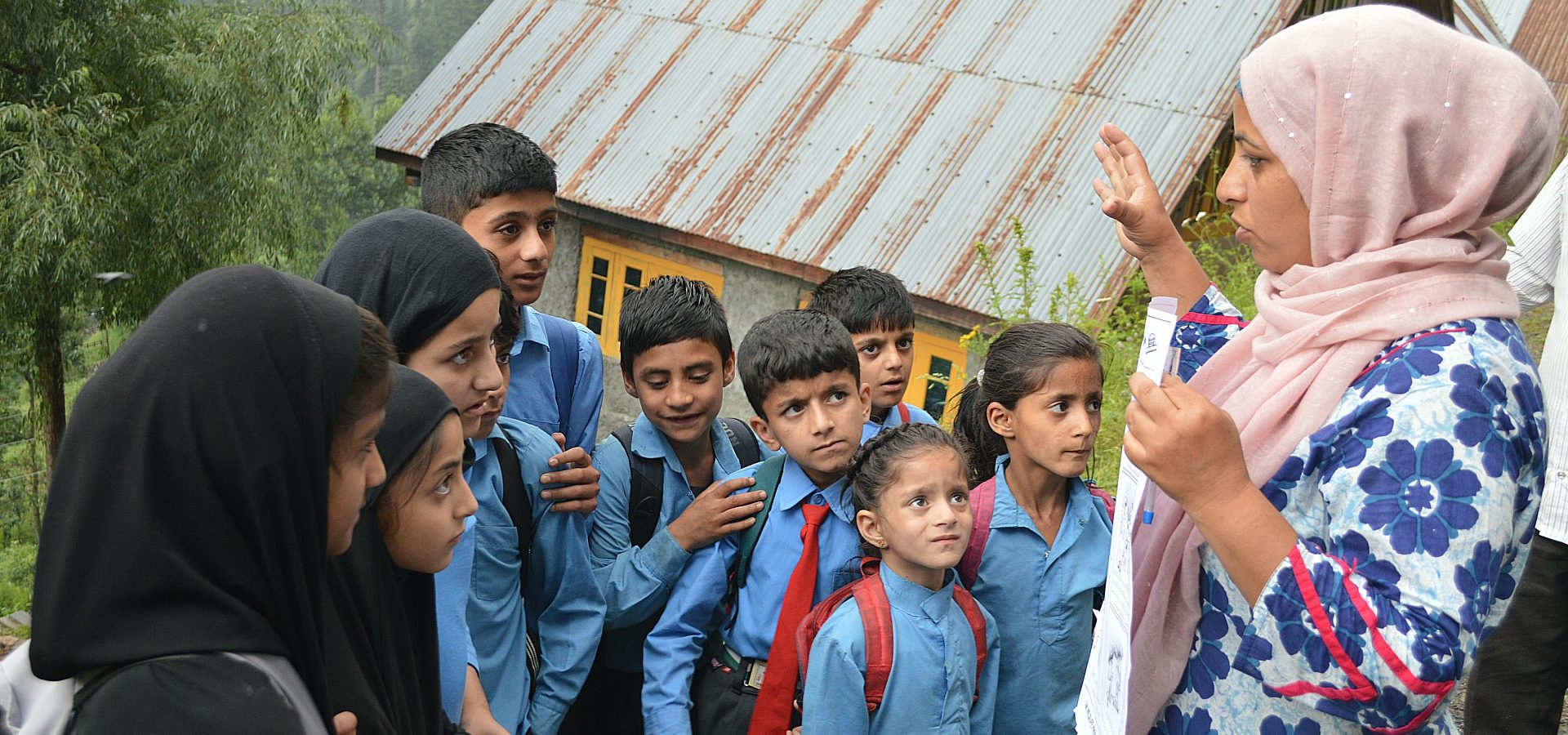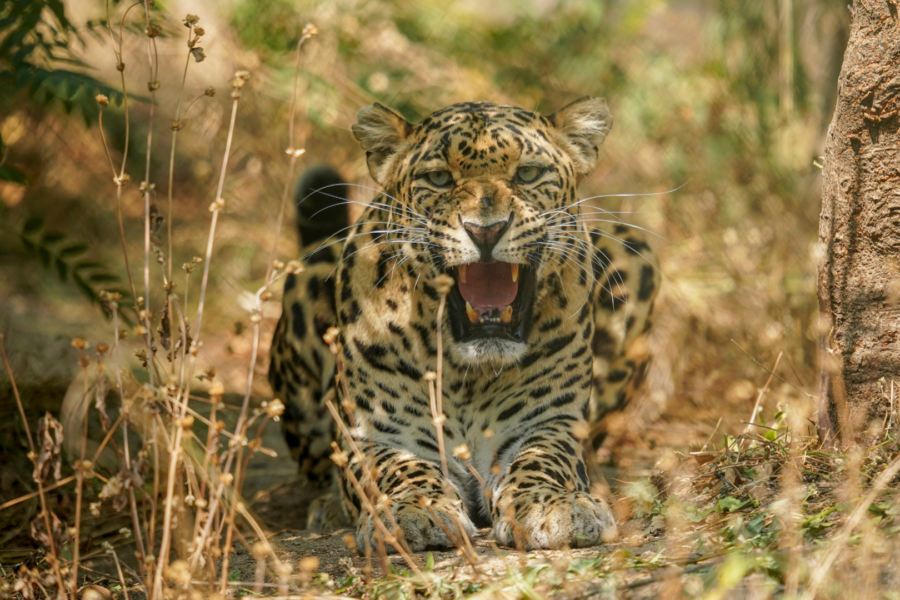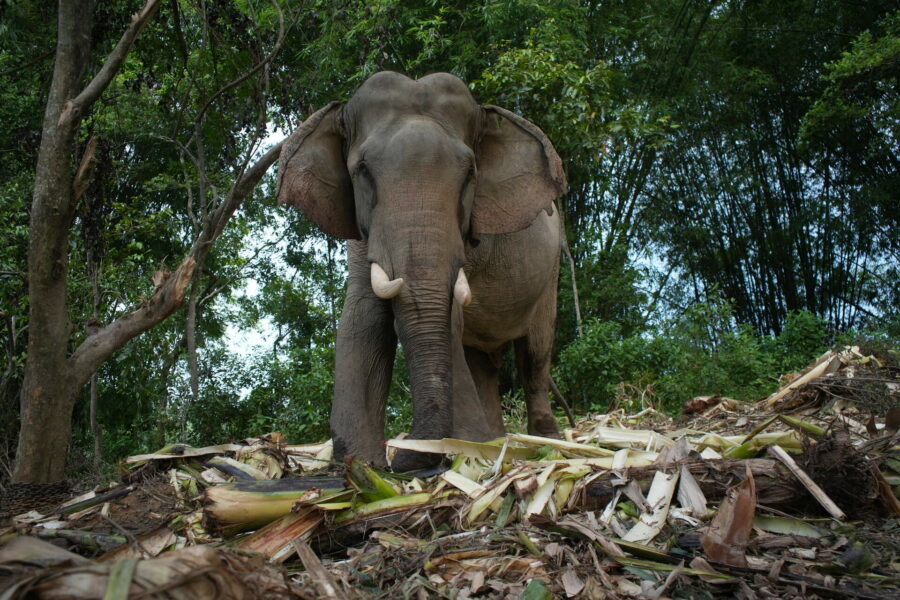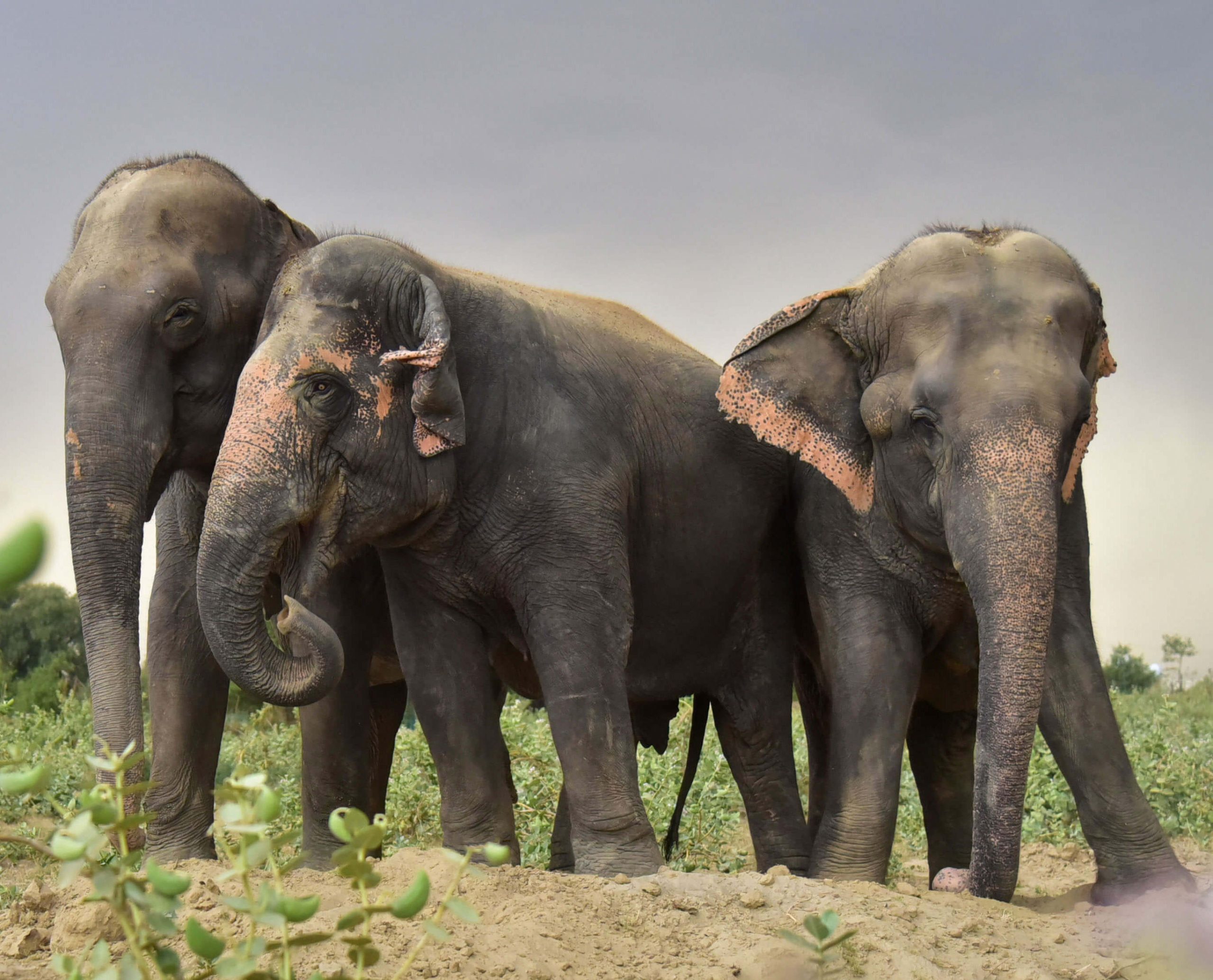Endowed with impeccable beauty, Jammu & Kashmir is home to a bounty of flora and fauna that thrive against bustling glacial rivers and snow-capped mountains. But a dreadful shadow looming over this haven is the burgeoning human-wildlife conflict, gravely impacting both wild animals as well as humans. With wild habitat depleting rapidly, people and animals are beginning to encounter each other unexpectedly, resulting in numerous casualties for both.

The Situation in Jammu & Kashmir
Human-wildlife conflict occurs when the needs of wildlife overlap with those of growing human populations. The close proximity of humans to established wildlife territories exacerbates the situation in Jammu & Kashmir. The most pressing man-animal conflict situations in the area involve instances with Indian leopards (Panthera pardus fusca) and the two bear species found in the region: the Himalayan brown bear (Ursus arctos isabellinus) and the Asiatic black bear (Ursus thibetanus).

A collaborative research by Wildlife SOS and the Department of Wildlife Protection, Jammu & Kashmir, focused on Asiatic black bear (Ursus thibetanus) attacks in the Kashmir Valley, has revealed that of the five ecological regions present here, human-black bear conflicts are recurrent in the South and North divisions, which boast of having the most forest cover. The findings from the study indicate that these divisions are also experiencing rapid deforestation and urbanisation, exacerbating the conflict situation. With forested lands being decimated for agriculture or residential purposes, frequent encounters with Asiatic black bears have become a common phenomenon. Also inviting them often to human-populated areas is the rising cultivation of commercial horticultural crops at the edges of forests that create favourable habitats for them.
The Himalayan brown bears, too, have been venturing closer to human locales in search of food, as per a groundbreaking survey conducted by Wildlife SOS in 2021. These bears have been persistently rummaging through garbage dumping zones and are now colloquially referred to as “garbage bears.”
It has also been noted that for two decades since 2000, human-leopard interactions have been relatively high, with a total of 424 leopard attacks having been recorded in the union territory. This has been increasing alarmingly, especially in the North division, with Baramulla being a hotspot.

Key Reasons behind Conflict
Habitat fragmentation, changes in land use patterns, poor waste management, increased density of livestock grazing and dwindling prey base are some key drivers specific to this region that nudge wild animals into human-inhabited areas, culminating in sudden encounters.
Rampant anthropogenic activities have significantly altered key wildlife habitats in the region. Paddy fields and buffer zones between humans and wild habitats have been turned into apple orchards or residential areas. Changes in forest cover disrupt the population of natural prey, forcing predators to hunt on livestock as they venture into human settlements in search of alternative food. Recurrence of such situations evoke primal fears in residents and contribute to negative perceptions and attitudes towards the specific animal involved, which ultimately jeopardises several conservation efforts.
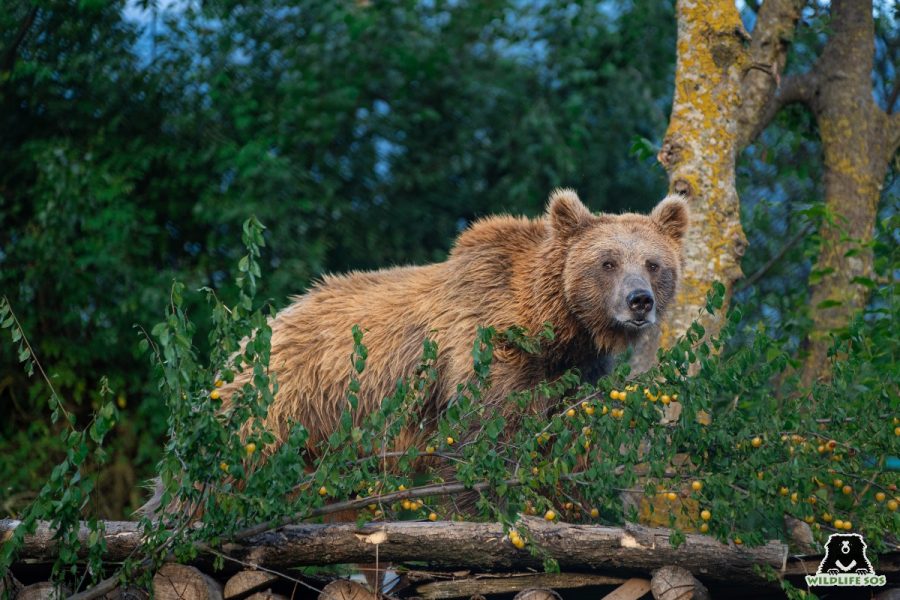
The Role of Wildlife SOS
As habitat encroachment becomes more pronounced, the boundaries between human habitations and forests blur, aggravating human-wildlife conflict situations. The fundamental step to mitigate negative interactions with wild animals starts with creating awareness and educating the public.
Wildlife SOS is a key organisation in Jammu & Kashmir that works closely with the wildlife department to equip individuals and communities with essential information to promote a better understanding of coexistence with wildlife. Ms. Aaliya Mir, Education Officer and Programme Head of Wildlife SOS in Jammu & Kashmir, has nearly 20 years of field experience and understands how crucial it is to spread knowledge about the wildlife that one may encounter in their area. While conducting sessions, she and her team address human-wildlife conflict situations in a holistic manner to sensitise people.

Let’s look at the various initiatives undertaken by Wildlife SOS in Jammu & Kashmir :
Engaging Stakeholders
Communities inhabiting urban fringes and rural areas are at the forefront of human-wildlife conflict situations. Therefore, it is vital to promote techniques that can prevent and resolve conflicts in a more informed and compassionate manner. The first step is to build trust with the local population, as their cooperation is key to mitigating conflict situations. Women, youth, and herders have played a crucial role as stakeholders in our initiatives.
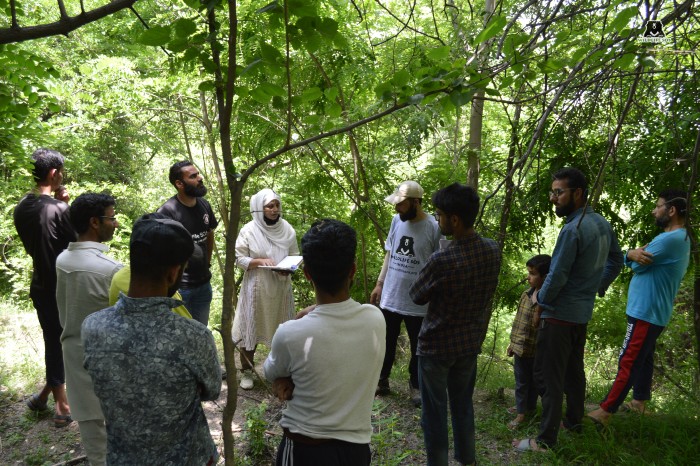
Recognising the critical importance of targeted education, Wildlife SOS conducts various workshops and training sessions in hotspots of conflict-prone areas. Our team of trained professionals, led by Ms. Aaliya Mir, equip locals with essential knowledge of how to tackle encounters with wild leopards and bears. Additionally, waste management is highly stressed upon during these sessions, as improper waste disposal lures wild animals that are already experiencing a decline in their prey base to come here in search of food.
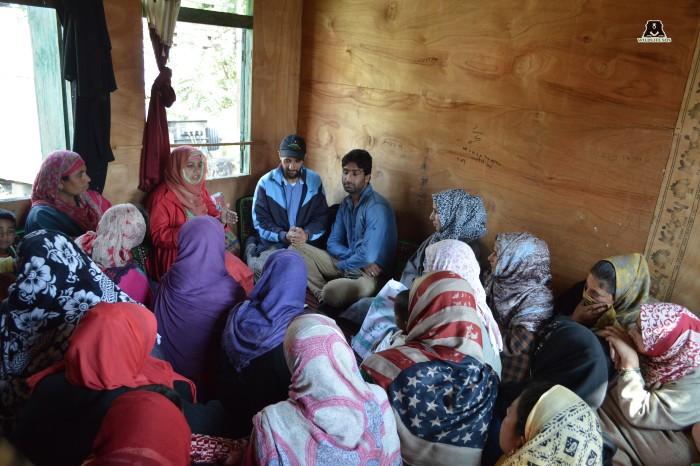
Nomadic livestock herders, who seasonally migrate to Kashmir for 4-5 months, occupy critical areas and are one of the key stakeholders in our conflict mitigation efforts. They are primarily found in Sonmarg, Pir Panjal, and the Hirpora Wildlife Sanctuary in Shopian. Temporarily residing in the highlands and pastures, the accompanying livestock depletes resources essential for herbivorous species, which has a domino effect on the local food chain. The growing density of livestock also attracts leopards, which see them as an alternate prey source. It has been observed that as the herders migrate, leopards follow, shifting the conflict zones along with them.

Conservation Education
Wildlife SOS spearheads a multitude of conservation education initiatives targeting the youth. While these projects contain needed information, our team makes sure to unfurl them with a fun twist. Nature walks and engaging competitions are some of the ways with which Wildlife SOS imbibes the importance of coexistence with the wild in young minds.
As a means to inculcate a mindset of empathy towards wild animals, Wildlife SOS often invites students to the Dachigam Rescue Centre. This brings them in close proximity to the endemic bears that we have rescued and rehabilitated, and they learn about the traumatic pasts the bears suffered from as a result of anthropogenic activities. Furthermore, Wildlife SOS is invited to various colleges to conduct lecture sessions owing to extensive on-ground experience over many years. Valuable insights and practical solutions are shared, enriching the knowledge of students and fostering a deeper understanding about local wildlife.

Experiential nature walks are a key component of the conflict-mitigation programme. It is designed to enhance students’ understanding of their environment. During these walks, discussions focus on local flora and fauna, highlighting their ecological significance and how these natural resources are vital for the survival of wild animals.

Additionally, to address improper waste management as a root cause of conflict, frequent cleanup drives are organised with students from schools and colleges. These initiatives aim to educate and involve young people in practical conservation efforts, reinforcing the importance of proper waste disposal to mitigate human-wildlife conflicts.

To harness the creative potential of young minds, Wildlife SOS organises drawing and essay writing competitions focused on conflict mitigation and coexistence. These events encourage students to reflect on the causes of human-wildlife conflicts by leveraging their artistic and literary talents.

After each awareness session, posters are displayed in local areas in the regional language, tailored to specific locations and species. These posters highlight the dos and don’ts of wildlife interactions, provide conflict prevention tips, outline actions to take during an encounter, and offer preventive measures.

As human populations grow and pressure on forest areas increases, human-wildlife interactions and the resulting conflicts are also on the rise in Jammu & Kashmir. To address this issue proactively, Wildlife SOS employs a multifaceted approach that encompasses comprehensive outreach programmes, community workshops, and strategic awareness campaigns. This holistic strategy not only enhances community resilience, but also fosters a mindset of coexistence between humans and wild animals in high-risk areas.
If you would like to connect with Wildlife SOS to hold awareness sessions on conflict mitigation at your school, university or workplace, kindly email us at education@wildlifesos.org.

